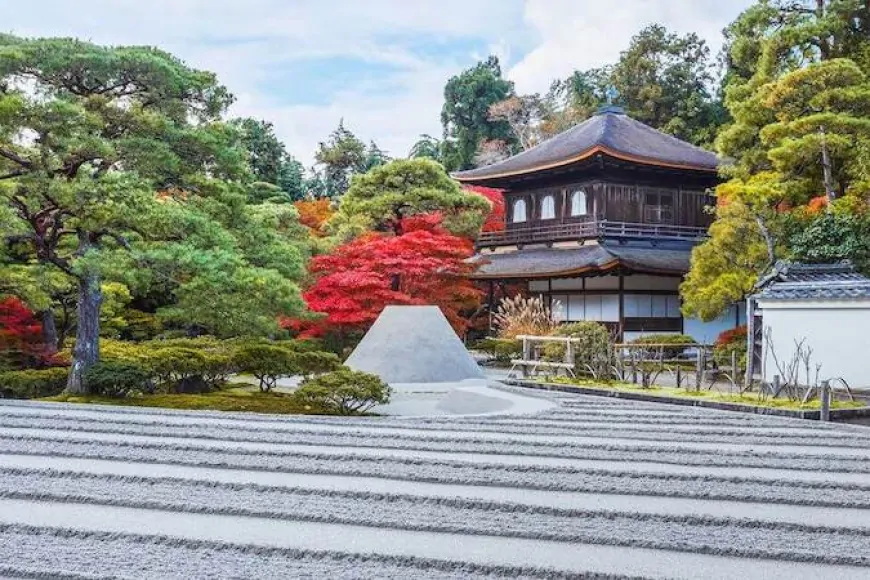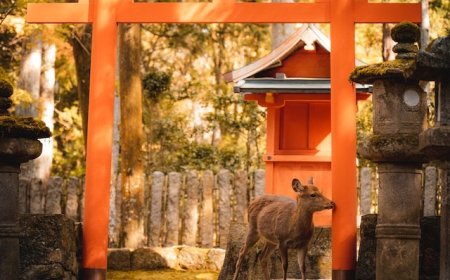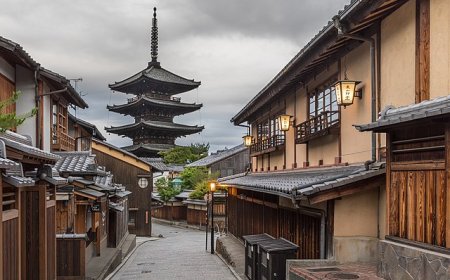Ginkakuji: Kyoto Silver Pavilion
Ginkakuji, with its serene gardens and understated elegance, offers a glimpse into the refined world of Zen aesthetics and Japanese cultural heritage.

Nestled in the lush hills of Kyoto, Ginkakuji, also known as the Silver Pavilion, is a quintessential example of Japanese aesthetics and tranquility. Originally constructed as a retirement villa for the shogun Ashikaga Yoshimasa, Ginkakuji later became a Zen temple. Today, it stands as a testament to the elegance and simplicity of Japanese architecture and garden design.
Ginkakuji was built in 1482 during the Muromachi period by shogun Ashikaga Yoshimasa. Although the pavilion was intended to be covered in silver foil, financial difficulties and Yoshimasa's death prevented this, leaving the building with its distinctive, unadorned wooden exterior. Despite this, the name "Silver Pavilion" persisted, contrasting with its golden counterpart, Kinkakuji (the Golden Pavilion).
The temple complex comprises several buildings, the most famous being the Silver Pavilion itself. Its simple yet refined design reflects the Zen principles of wabi-sabi, which emphasize beauty in imperfection and transience. Visitors can admire the pavilion's serene presence, complemented by the surrounding moss gardens and meticulously maintained grounds.
Ginkakuji is renowned for its stunning gardens, which seamlessly blend natural beauty with artistic design. The dry sand garden, known as the Sea of Silver Sand, features a striking cone-shaped structure called the Moon Viewing Platform. This garden is a masterpiece of Zen landscaping, inviting contemplation and reflection.
The lush moss garden, with its winding paths and tranquil ponds, offers a peaceful retreat from the hustle and bustle of daily life. Visitors can enjoy a leisurely stroll through this verdant oasis, taking in the seasonal changes and the harmonious balance of nature and design.
Ginkakuji is a popular destination for tourists and locals alike. Located at the end of the Philosopher's Path, a scenic walk along the canal lined with cherry trees, the temple is easily accessible. The best time to visit is during the spring cherry blossom season or the autumn foliage, when the temple and its gardens are at their most picturesque.
Ginkakuji is not only a place of historical importance but also a cultural symbol. It played a crucial role in the development of the Higashiyama Culture, which profoundly influenced Japanese arts, including tea ceremony, flower arrangement, and Noh theater. The temple's aesthetic principles continue to inspire artists and designers worldwide.
Whether you are an art enthusiast, a history buff, or simply seeking a tranquil escape, a visit to Ginkakuji promises a memorable and enriching experience.
Related Products

![【ふるさと納税】スーツケース [PROEVO-AVANT] フロントオー...](https://thumbnail.image.rakuten.co.jp/@0_mall/f405221-oki/cabinet/07205886/ay_sku/ay-s0005_00_v2.jpg?_ex=128x128)







































































































